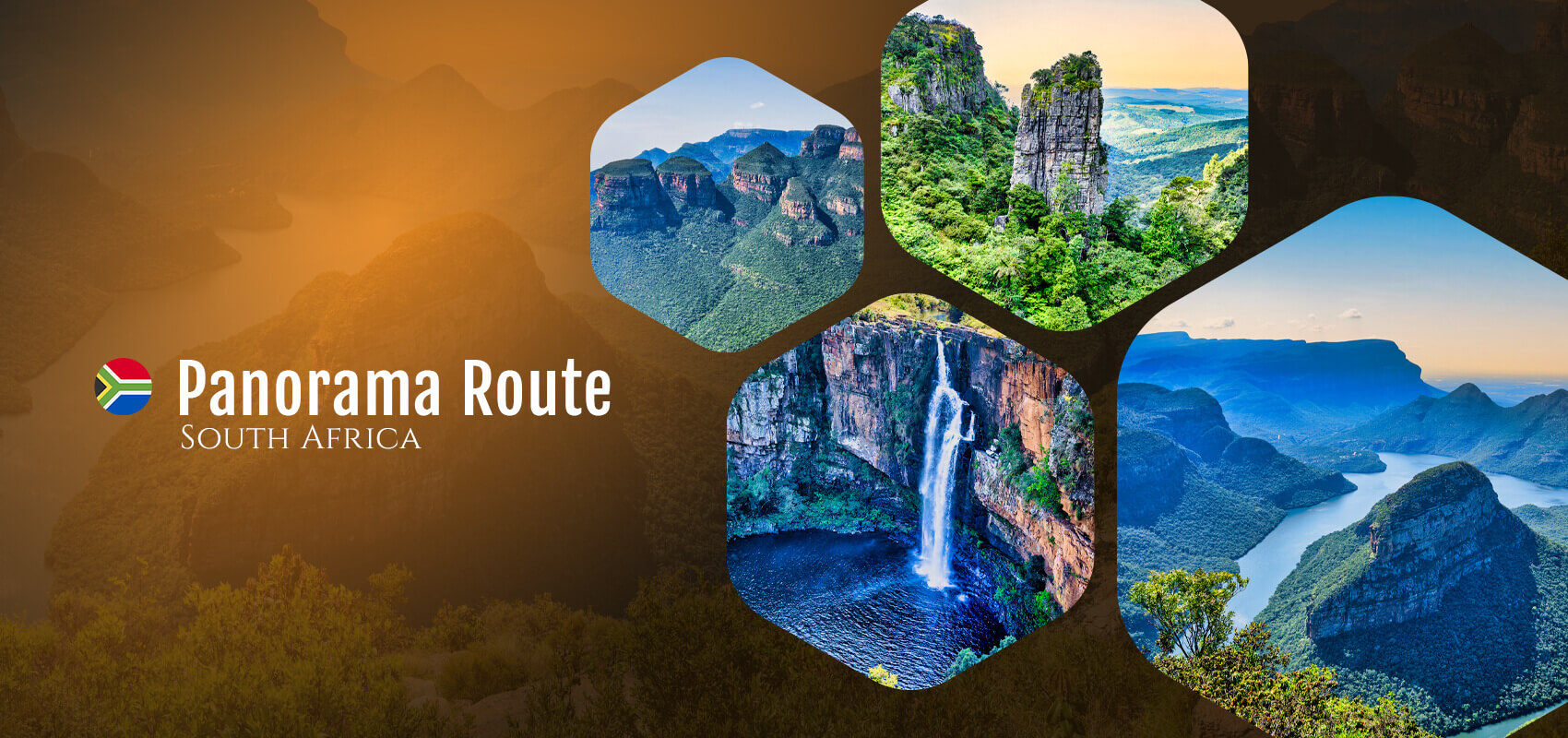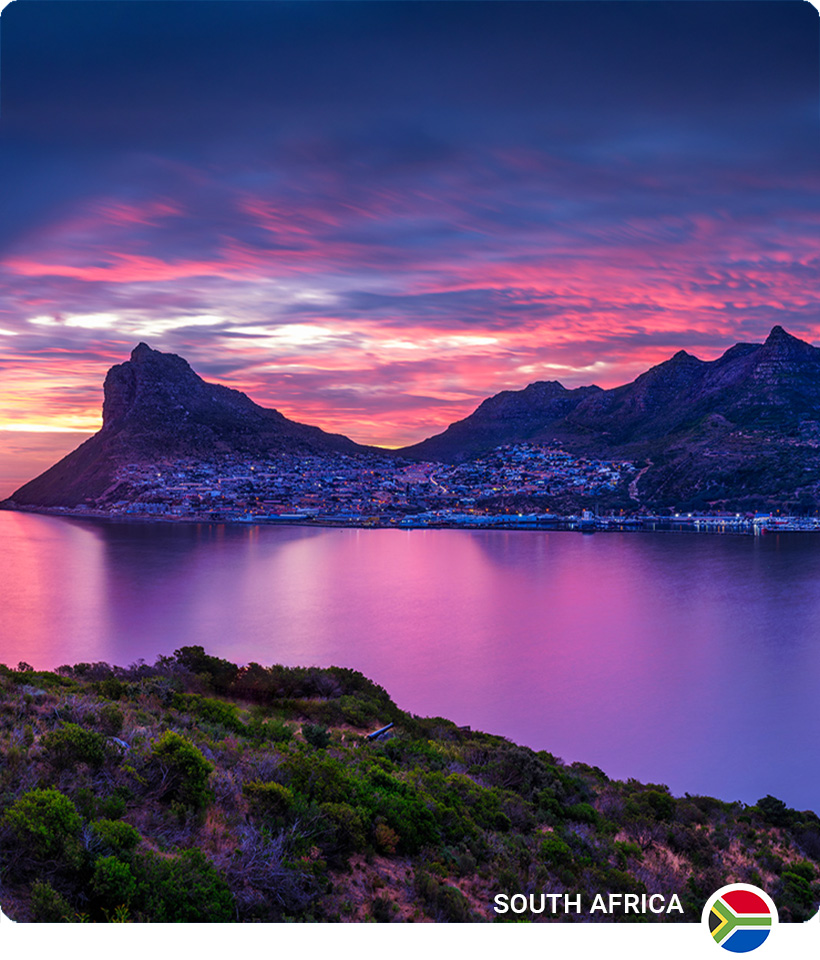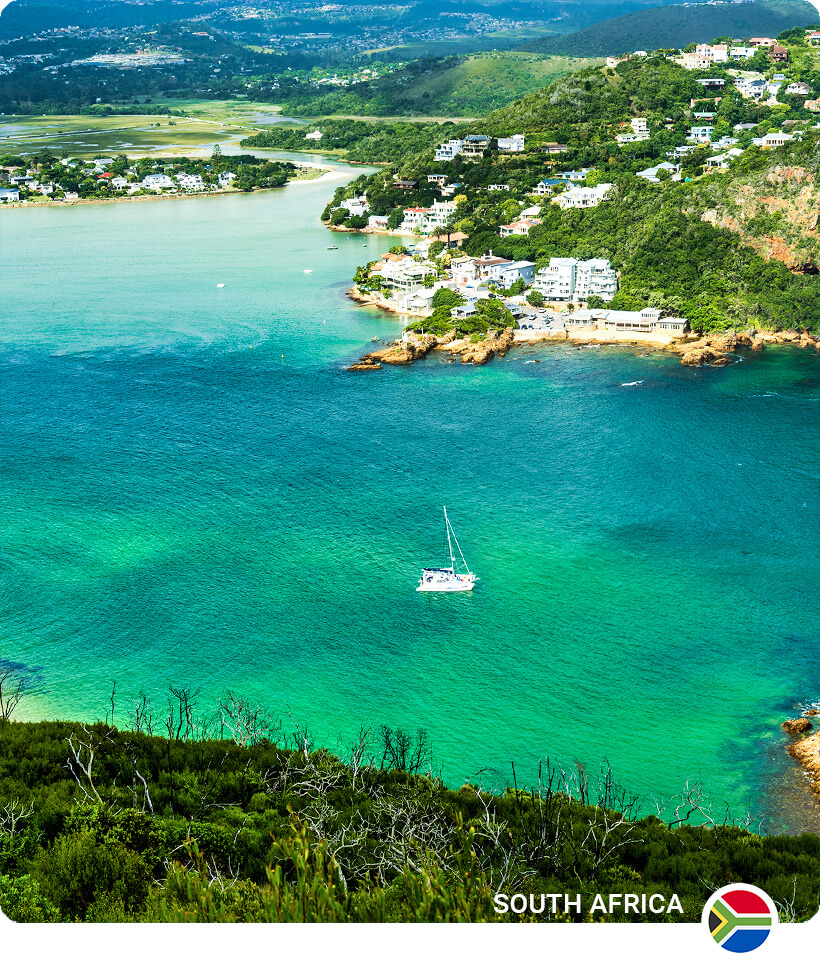Welcome to Mpumalanga, South Africa’s “Place of the Rising Sun”, home to one of the continent’s most spectacular drives: the Panorama Route. This incredible journey traces the dramatic edge of the Great Drakensberg Escarpment, where the grasslands of the Highveld plunge into the verdant Lowveld below. Renowned as one of the world’s most beautiful driving routes, it captivates visitors with its infinite vistas, cascading waterfalls, and the immense Blyde River Canyon – the planet’s largest green canyon.
Whether you’re an adventurer seeking thrills, a nature lover drawn to unique biodiversity, or a history enthusiast exploring tales of pioneers and gold rushes, the Panorama Route presents an unforgettable experience. Its strategic location also makes it a wonderful prelude or interlude to a safari adventure in the nearby Kruger National Park. To help you visualize and plan your ultimate road trip along this picturesque marvel, dive into our video guide, “Panorama Route, Mpumalanga: The Ultimate Road Trip Guide”.
Planning Your Panorama Route Adventure: Quick Tips
Before you hit the road, here are some essential tips to help you plan your trip:
- Best Time to Visit: While accessible year-round, the dry winter months (May-August) often provide the clearest views, though mornings/evenings are cold. Summer (Nov-Mar) brings thriving scenery and powerful waterfalls but also mist and rain. Shoulder seasons (Spring/Autumn) can offer a good balance.
- Getting Around: Self-driving is ideal for flexibility. A standard car is usually fine for main roads, but beware of potholes (see Driving Safety below). Download offline maps, as mobile reception can be patchy.
- Trip Duration: While you can see major highlights in one long day, allow 2-3 days to truly appreciate the sights and maybe include an activity or hike.
- Packing: Prepare for variable weather with layers, including warm clothes (especially in winter) and rain gear (especially in summer). Comfortable walking shoes, sun protection (hat, sunscreen, sunglasses), insect repellent, camera, binoculars, and a reusable water bottle are must-haves. Carry some cash for entrance fees and stalls.
- Dining: Don’t miss Harrie’s Pancakes in Graskop! Towns like Sabie and Hazyview also feature various options. Many sites include picnic/braai (barbecue) facilities.
- Entrance Fees: Most key viewpoints and attractions charge entrance fees, contributing to conservation. Carry cash, although cards may be accepted at major sites.
- Footwear: Comfortable walking shoes are essential for exploring viewpoints and trails. Sturdier shoes are recommended for any hikes into gorges or longer trails.
- Sun Protection: The African sun is strong! Always pack and use hats, high-SPF sunscreen, and sunglasses.
- Driving Safety: Potholes are a significant hazard, particularly north of Graskop – drive cautiously. Avoid driving at night due to poor visibility, animals, and security risks. Be aware of trucks, pedestrians, and minibus taxis which may stop suddenly.
- General Safety: Standard South African safety precautions apply. Always lock your vehicle doors, keep valuables out of sight (store in the boot/trunk before arrival), and be aware of your surroundings, especially when parking or using ATMs. Stick to main roads.
1. Hitting the Road to Lone Creek Falls
Our Panorama Route adventure begins bright and early in Pretoria East, taking the N4 highway east towards Mpumalanga and our first destination near Sabie. While this marks the start of our journey, the adventure truly unfolds for any visitor as they navigate the winding roads of the province, primarily the R532 which serves as the backbone of this scenic drive. Many travellers approach from different directions – perhaps from Nelspruit (Mbombela), Hazyview near Kruger National Park’s gates, or via the historic Long Tom Pass (R37) from Lydenburg (Mashishing). Regardless of the starting point, you’ll feel the landscape changing dramatically. This is where the vast grasslands of the Highveld meet the edge of the Great Drakensberg Escarpment, preparing to plunge spectacularly into the subtropical Lowveld below.
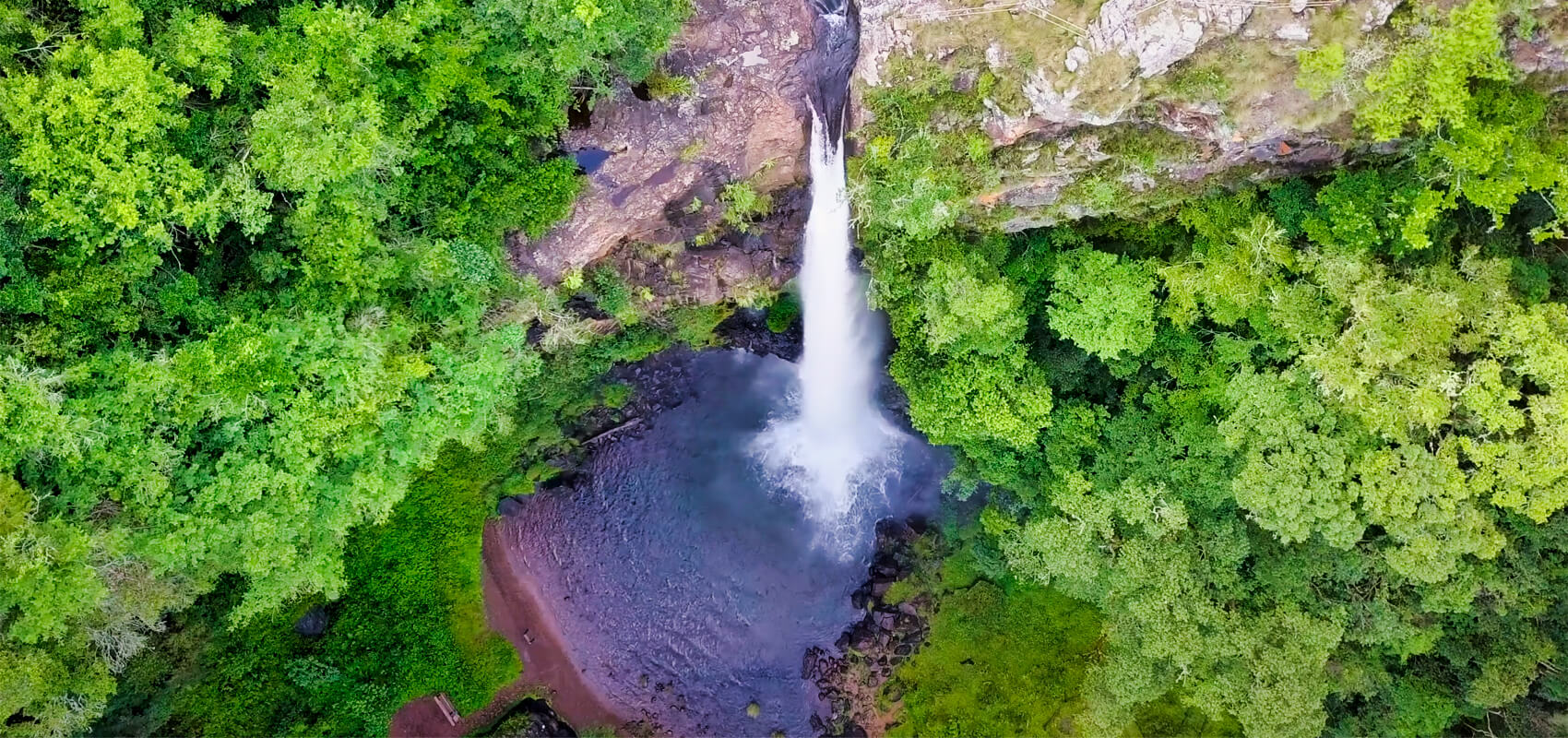 Lone Creek Falls cascading into crystal-clear pools along the Panorama Route in Mpumalanga.
Lone Creek Falls cascading into crystal-clear pools along the Panorama Route in Mpumalanga.
After just over three hours on the road, we make our first magical stop: Lone Creek Falls. Situated just a short detour (about 15 minutes) from Sabie, this impressive waterfall is a designated National Monument. Here, the Lone Creek plunges 70 meters down a sheer cliff face into a crystal-clear pool below, nestled within a beautiful, dense indigenous forest. Unlike many other falls along the route, Lone Creek features an easily accessible pool at its base, making it a perfect spot for a refreshing swim on a warm day. Take a moment to walk through the well-maintained pathways, breathe in the forest air, and simply immerse yourself in the natural beauty before continuing the journey.
Tips for visiting Lone Creek Falls:
- Entrance Fee: Expect to pay an entrance fee, as is common for most developed waterfall sites along the route. It’s wise to carry sufficient cash for this, as card facilities might not always be available.
- Accessibility: One of the few falls with an easily accessible swimming pool at the base.
- Pathways: Well-maintained paths make exploring the forest setting easy.
2. The Twin Streams of Mac Mac Falls
A very short drive, just about 10 minutes north from Sabie towards Graskop on the R532, brings us to our second stop: the historic Mac Mac Falls. Declared a National Monument, these remarkable twin cascades dramatically plunge 65-70 meters into the deep gorge below. The viewing platforms provide a superb perspective to feel the power of the water. While the deep pool directly beneath the main falls is inaccessible and off-limits for swimming, don’t miss the short hike down towards the gorge for different vantage points. Watch for local wildlife in the verdant surroundings, including vervet monkeys, chacma baboons, and the distinctive southern yellow-billed hornbill.
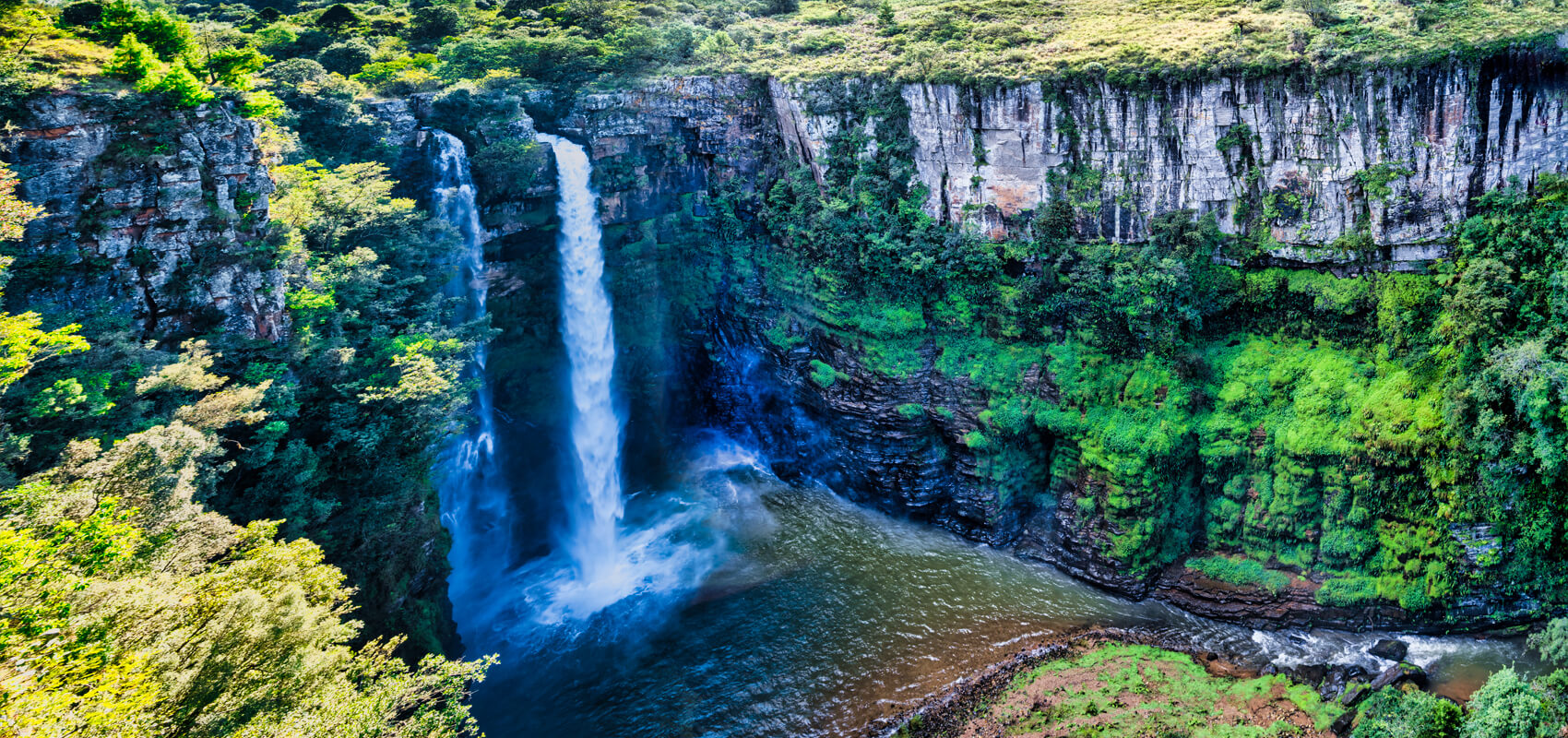 Mac Mac Falls and crystal-clear pools surrounded by an impressive gorge in Mpumalanga.
Mac Mac Falls and crystal-clear pools surrounded by an impressive gorge in Mpumalanga.
For those wanting a swim or a picnic, the separate Mac Mac Pools are located just 2km away from the main falls viewpoint. A trail leads to these inviting, clear rock pools, which are perfect for safe family swimming. This area is a popular picnic spot with braai (barbecue) facilities and restrooms available.
Tips for visiting Mac Mac Falls & Pools:
- Entrance Fees: Expect separate entrance fees for the Mac Mac Falls viewpoint and the Mac Mac Pools picnic/swimming area. Carrying cash is recommended.
- Viewing: Use the dedicated viewing platforms at the main falls for the best views.
- Hiking: A short trail descends towards the gorge at the main falls. The 3km Secretary Bird Trail starts at the Mac Mac Pools area.
- Swimming: Swimming is not permitted or possible at the base of the main Mac Mac Falls. Head to the separate Mac Mac Pools (2km away) for safe swimming.
- Facilities: Picnic and braai facilities are available at Mac Mac Pools.
- Wildlife: Be mindful of monkeys and baboons, especially around the picnic areas at the pools. Do not feed them and keep food secured.
3. Graskop & the Gorge Lift Adventure
Leaving the waterfalls behind for now, we head towards Graskop, often called the gateway to the Panorama Route’s central wonders. Graskop is frequently highlighted as the ideal base for exploring, presenting easy access to many major attractions. While the town itself includes shops, restaurants (including the famous Harrie’s Pancakes), and accommodation, our focus here is the major attraction, the Graskop Gorge Lift Company.
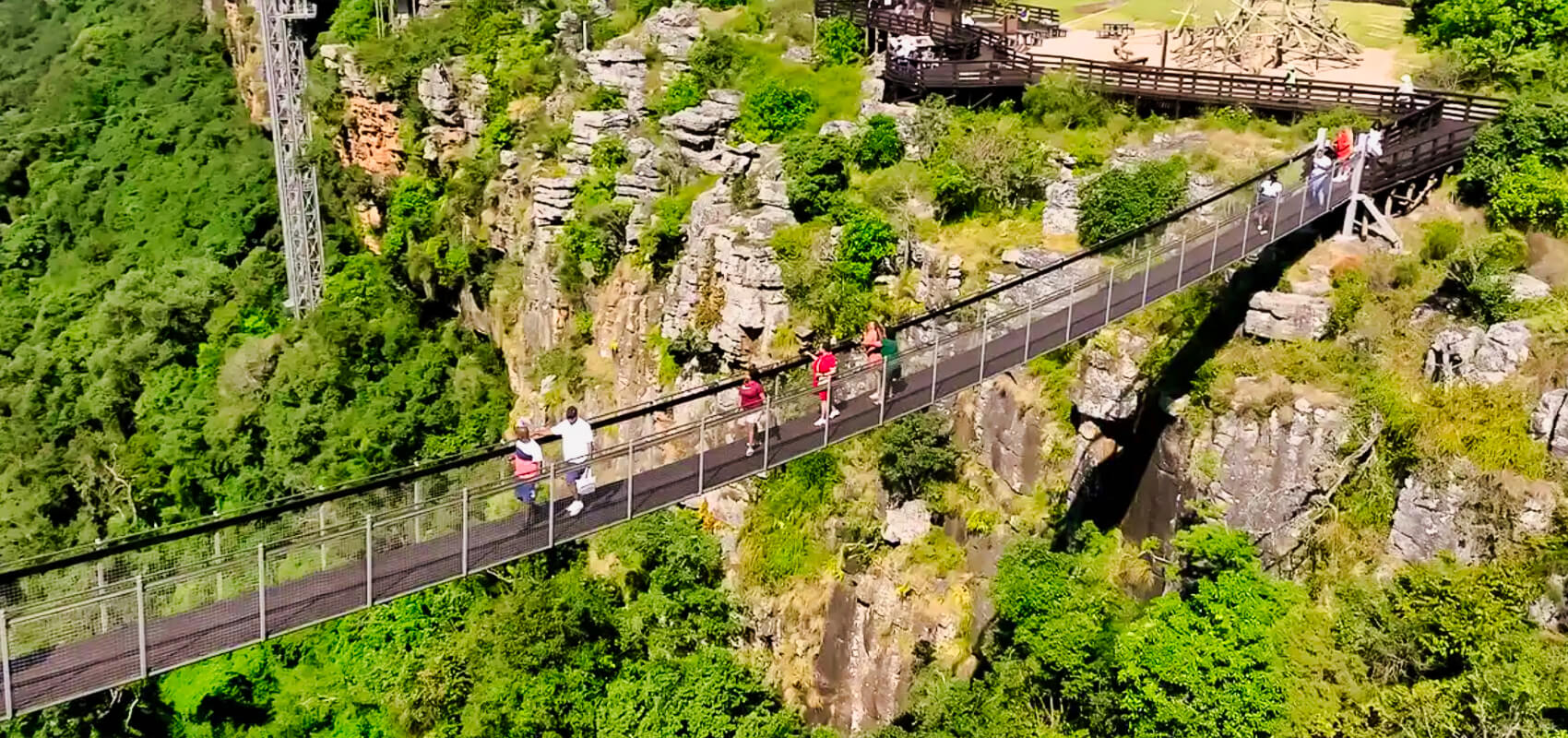 Graskop’s famous suspension bridge overlooking a majestic and picturesque gorge.
Graskop’s famous suspension bridge overlooking a majestic and picturesque gorge.
This unique destination presents a memorable experience right at the edge of the escarpment. The highlight for many is the viewing lift – a glass elevator that descends 51 meters down the cliff face into the rich Afromontane indigenous forest below. Once at the bottom, you can explore a network of elevated wooden walkways and suspension bridges (around 600 meters in total) that wind through the forest, past smaller waterfalls and across refreshing river streams. For the adrenaline junkies, the Gorge Lift Company boasts several thrilling options: test your nerve on the 120-meter high-wire Zipline across the gorge, take the plunge on the daring 70-meter freefall Big Swing (reaching speeds up to 140km/h), or simply walk across the 52-meter Suspension Bridge spanning the gorge high above the valley floor. It’s truly an essential destination, catering to both nature lovers and adventure seekers alike.
Tips for visiting Graskop Gorge Lift Company:
- Fees: Be aware that there’s a general entrance fee to the site, and then separate fees for the viewing lift and each of the adventure activities (Big Swing, Zipline). Check their website for current pricing.
- Booking: While you can often buy tickets on-site, consider booking activities online in advance, especially during peak season, to secure your spot.
- Time Allocation: Allow ample time. Don’t just budget for the activity itself; exploring the forest boardwalks and enjoying the views takes time.
- Weather: Activities are weather-dependent. High winds or storms might cause temporary closures, particularly for the swing and zipline.
- Choose Your Adventure: Assess your comfort level – the lift and forest walk are great for all, while the swing and zipline are high-thrill activities.
- Facilities: The site includes restaurants, bars, shops, and restrooms.
- Safety Briefings: Listen carefully to all safety briefings provided for the activities.
4. The Striking Pinnacle Rock
Leaving the buzz of Graskop behind, we head just a short distance south (back towards Sabie, or on the R534 scenic loop depending on direction) to encounter a remarkable geological feature: The Pinnacle Rock. This impressive site features a towering, freestanding quartzite buttress rising 30 meters vertically from the deep indigenous forest below. It stands like a lone sentinel at the edge of the Driekop Gorge.
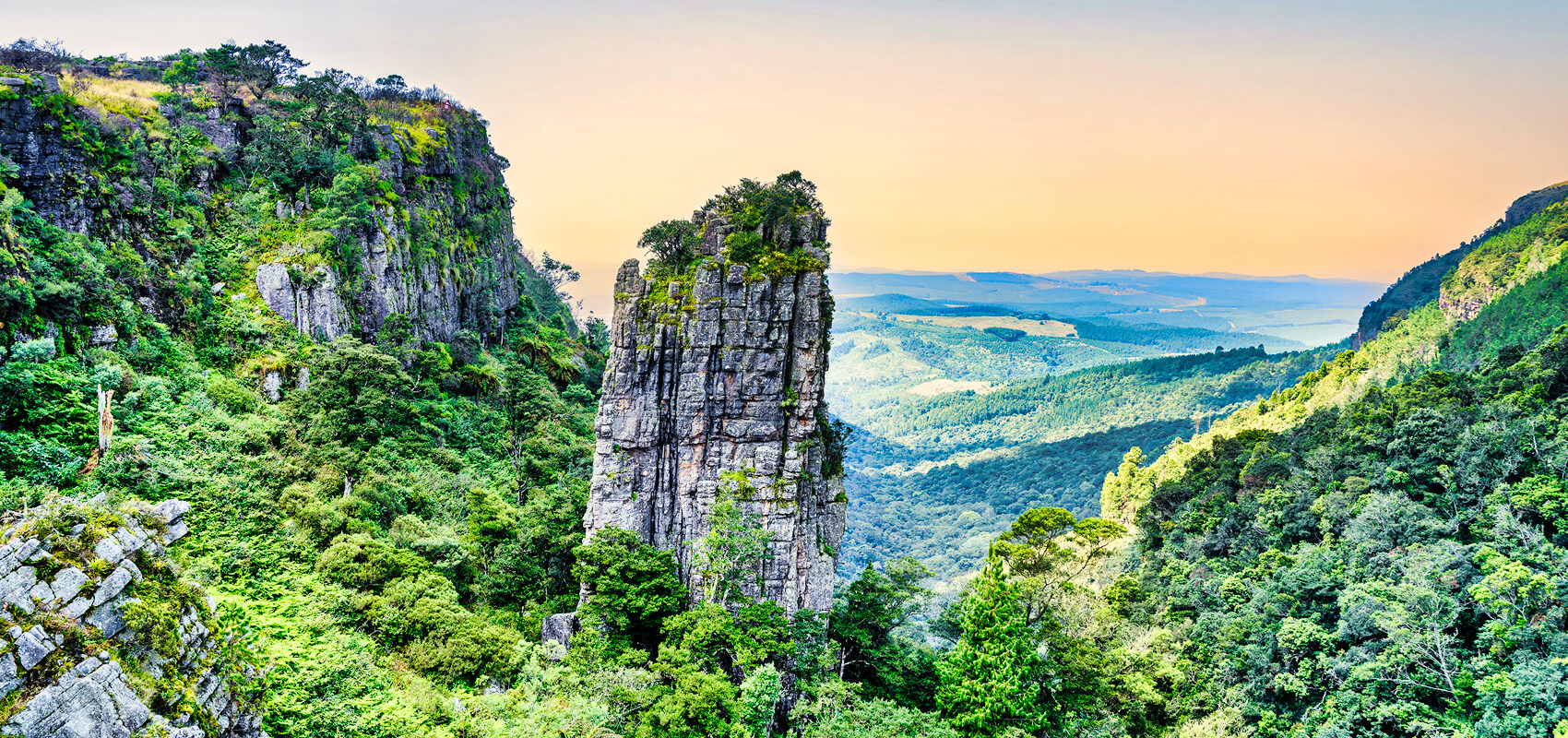 The celebrated Pinnacle Rock towering over a picturesque and green gorge landscape.
The celebrated Pinnacle Rock towering over a picturesque and green gorge landscape.
There are pathways that allow you to view the main rock formation from different angles and also see the nearby waterfall where water flows among the stones and cascades down into the gorge. The surrounding grasslands afford excellent views back towards the rock formations. Scan the area for wildlife; squirrels, bushbuck, and impalas are sometimes seen grazing in the forest within the gorge.
Tips for visiting The Pinnacle Rock:
- Entrance Fee: An entrance fee is payable to access the viewpoint area. Carrying cash is advisable.
- Viewpoints: There are multiple constructed viewpoints presenting different perspectives of the rock and the waterfall.
- Walking: Explore the pathways to fully appreciate the site and the surrounding views.
- Wildlife Spotting: Take a moment to scan the forest below for potential sightings of antelope or smaller creatures.
5. The Majestic Lisbon Falls
Just a short 10-minute drive north of Graskop brings us to the impressive Lisbon Falls, renowned as the highest waterfall in Mpumalanga. Plunging an impressive 94 meters in multiple cascades, it’s truly one of the most spectacular waterfalls along the entire Panorama Route. Named either after the nearby farm or the Portuguese capital, its scale is best appreciated from the viewpoints near the parking area.
 Wonderful view of Lisbon Falls with multiple cascades tumbling down a picturesque gorge.
Wonderful view of Lisbon Falls with multiple cascades tumbling down a picturesque gorge.
We personally loved taking the hike down the trail that leads into the gorge, offering the chance to swim in the pools below, though be aware that the path is steep, and accessibility can sometimes be restricted. Should you venture down, the surrounding gorge forest and river reward visitors with abundant birdlife – watch for the African Fish Eagle, the colourful Narina Trogon, and Grey Herons. Smaller wildlife like rock hyraxes (dassies) and other grazing animals might also be spotted in the vicinity.
Tips for visiting Lisbon Falls:
- Entrance Fee: An entrance fee is charged to access the site. Remember to carry cash.
- Height: Appreciate that this is the highest waterfall in Mpumalanga.
- Viewing: Easily accessible viewpoints near the top present great perspectives for photos.
- Trail to Base: A steep trail leads to the base. Assess conditions, your fitness level, and potential accessibility restrictions before attempting the descent. Sturdy footwear is essential if attempting this.
- Swimming: Possible in the pools at the bottom if the trail is accessible and conditions permit.
- Wildlife: This is a good spot for birdwatching and potentially seeing dassies or other small animals. Binoculars are recommended.
6. The Candle Flame of Berlin Falls
Continuing our waterfall hunt, another short 10-minute drive north from Graskop leads us to the lovely Berlin Falls. Named after the Berlin farm, this remarkable cascade drops around 80 meters as the river plunges into a deep, clear pool below. It’s particularly noted for its distinctive shape, resembling the wax-dripped form of a candle just before it splits into the main cascade.
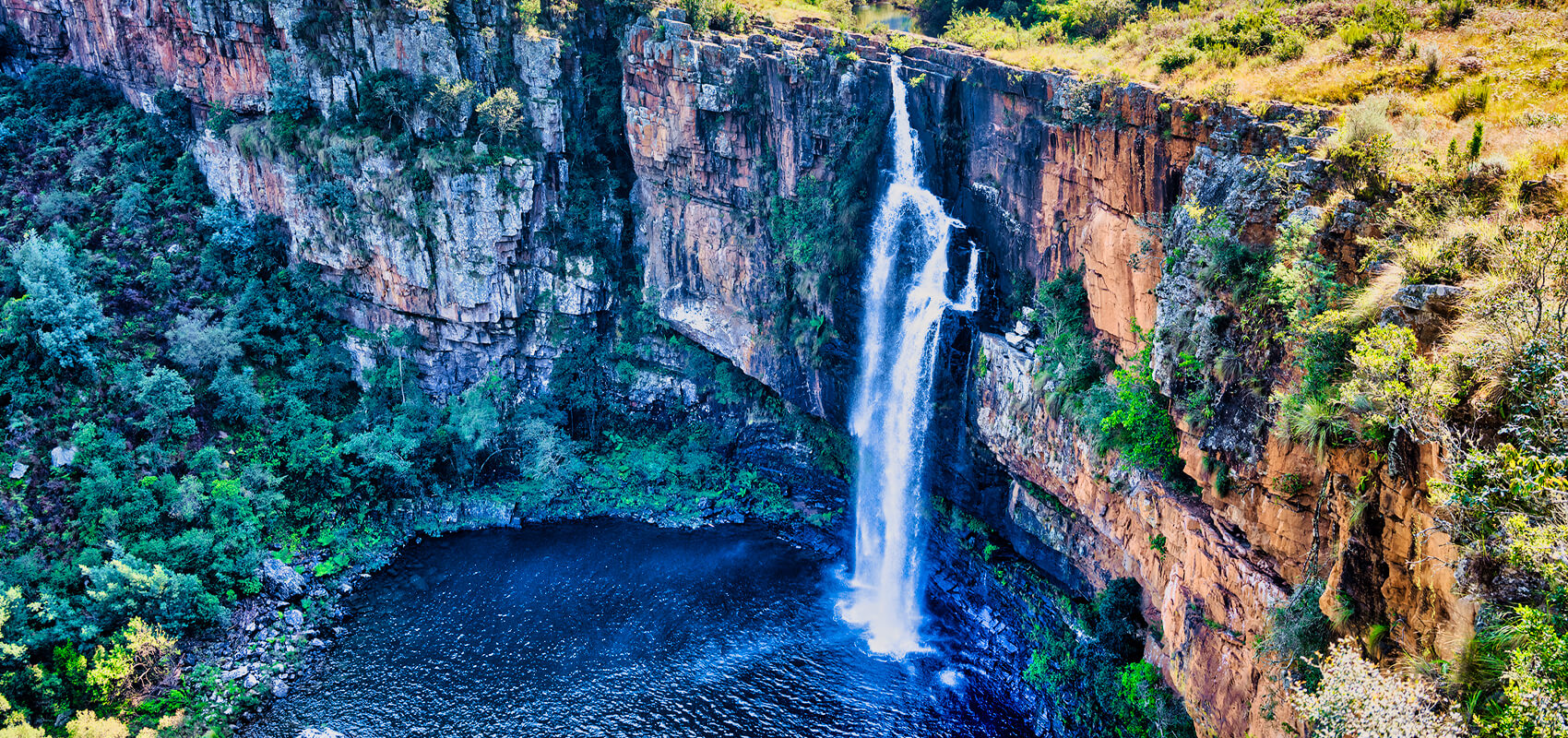 Spectacular Berlin Falls with a tranquil crystal pool nestled in Mpumalanga’s landscape.
Spectacular Berlin Falls with a tranquil crystal pool nestled in Mpumalanga’s landscape.
Taking a brief stroll along the pathways around the cliff edge provides superb bird’s-eye views of the falls and the pool. The surrounding forest and grasslands provide a beautiful backdrop and are home to wildlife; scan for the shy red duiker and various indigenous birds that inhabit the area.
Tips for visiting Berlin Falls:
- Entrance Fee: As with other major falls, an entrance fee is payable. It’s best to have cash available.
- Unique Shape: Look for the distinctive “candle flame” shape in the upper cascade before the main drop.
- Viewing: Accessible viewpoints provide excellent perspectives from above.
- Walking: Short pathways allow for strolls to appreciate different angles.
- Wildlife: Scan the surrounding forest and grasslands for birds and potentially the small red duiker antelope. Binoculars are useful here.
7. The Heavenly Vista of God’s Window
Venturing into the heart of the Panorama Route, our next destination is the well-named God’s Window. Situated just a 10-minute drive from Graskop on the scenic R534 loop, this viewpoint truly lives up to its promise of expansive views. From the cliff edge, the world seems to fall away over 900 meters into a richly forested ravine below, revealing a spectacular panorama that stretches across the vast Lowveld.
 Incredible vista of God’s Window showcasing verdant valleys and steep cliffs.
Incredible vista of God’s Window showcasing verdant valleys and steep cliffs.
To reach the main viewing platforms, you’ll take a walk through a lovely, often misty, indigenous rainforest. Once you emerge at the edge, the immense scale of the landscape unfolds. On clear days, the views can extend towards the distant Kruger National Park and sometimes even as far as the Lebombo Mountains bordering Mozambique. It’s a perspective that truly captures the immense beauty and scale of the Mpumalanga escarpment.
Tips for visiting God’s Window:
- Entrance Fee: An entrance fee is payable at the gate; carrying cash is advisable.
- Weather Dependent: The ‘window’ can be completely obscured by mist, especially during the rainy season or early mornings. Aim for clear conditions for the best experience.
- Walking Required: Be prepared for a walk along paved paths, including some steep sections and stairs, through the rainforest to reach the main viewpoints.
- Multiple Platforms: There are several viewing platforms at different levels presenting slightly varied perspectives.
- Facilities: You’ll usually find craft stalls near the entrance and basic restroom facilities.
- Alternative View: For a similar expansive view without the walk (though slightly less dramatic), the nearby Wonder View viewpoint is free and accessible directly from the parking area.
8. The Peaceful Amber Treur Falls
Nestled along the Treur River (‘River of Sorrow’), not far from the geological spectacle of Bourke’s Luck Potholes, lies the scenic Amber Treur Falls. This spot presents a potentially quieter and more serene waterfall experience compared to some of the major viewpoints nearby.
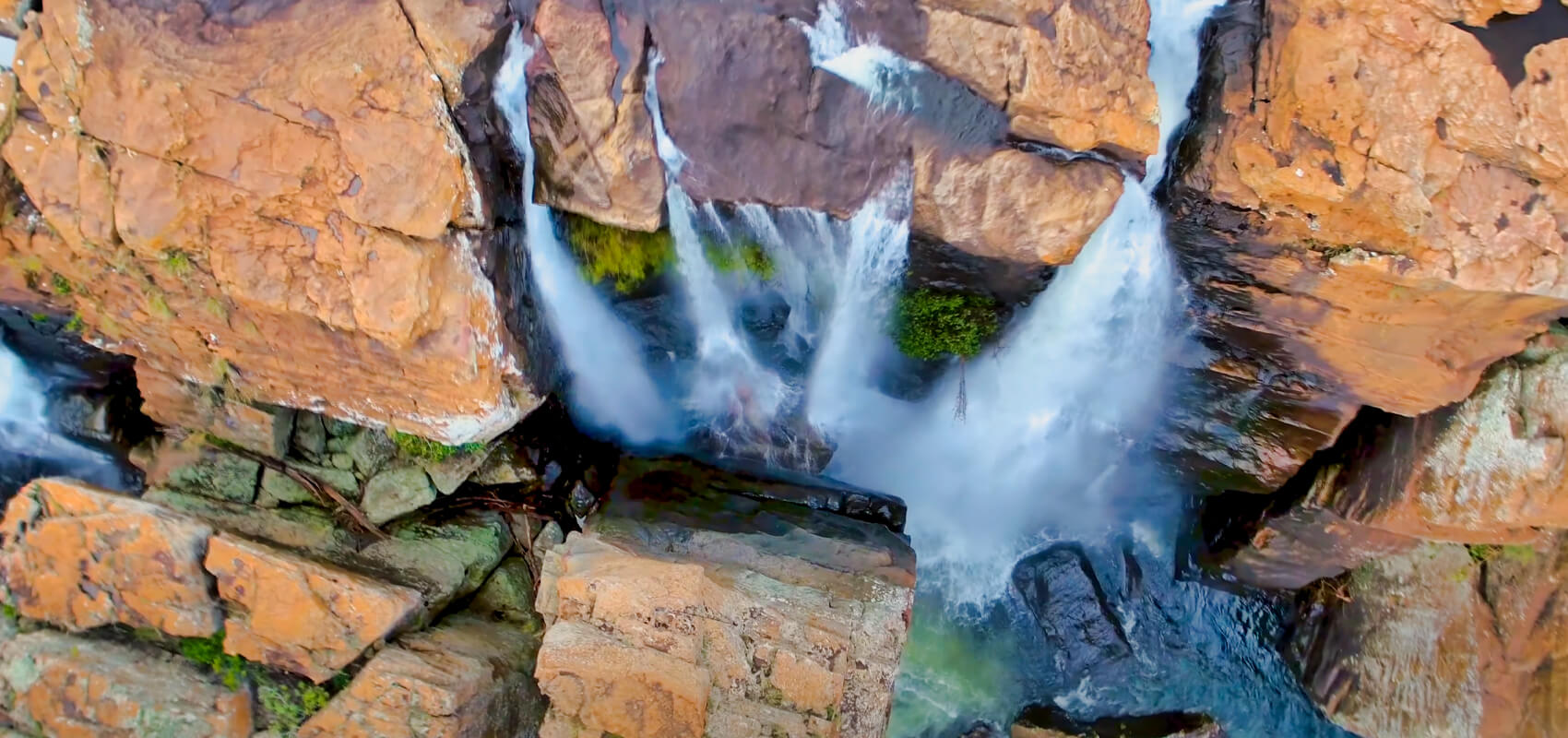 Picturesque beauty of Amber Treur Falls surrounded by greenery in South Africa’s Panorama Route.
Picturesque beauty of Amber Treur Falls surrounded by greenery in South Africa’s Panorama Route.
It’s a beautiful waterfall providing a tranquil interlude for travellers exploring this section of the route. For those wanting a closer look, a hike down towards the river canyon below can reward you with wonderful views of the falls and the surrounding landscape.
Tips for visiting Amber Treur Falls:
- Location: Found along the Treur River, in the vicinity of Bourke’s Luck Potholes.
- Access: Reached via a turn-off from the main route, possibly involving a gravel or dirt road.
- Hiking: A path may lead down into the river canyon, featuring different perspectives. Assess the trail’s condition before heading down.
- Fees: Information on entrance fees is unclear; check locally or be prepared for a possible small fee.
- Atmosphere: Likely provides a more serene experience than the busier main attractions.
9. The Extraordinary Bourke’s Luck Potholes
Prepare to be captivated by the power of water at Bourke’s Luck Potholes, an extraordinary natural wonder situated at the confluence of the Blyde River (‘River of Joy’) and the Treur River (‘River of Sorrow’). Over millennia, the swirling eddies of water, carrying sand and pebbles, have carved intricate and deep cylindrical potholes, scoops, and sculptures into the sandstone bedrock. Named after prospector Tom Bourke who staked a claim nearby (though he never found gold here himself), this site showcases nature’s artistry in striking fashion.
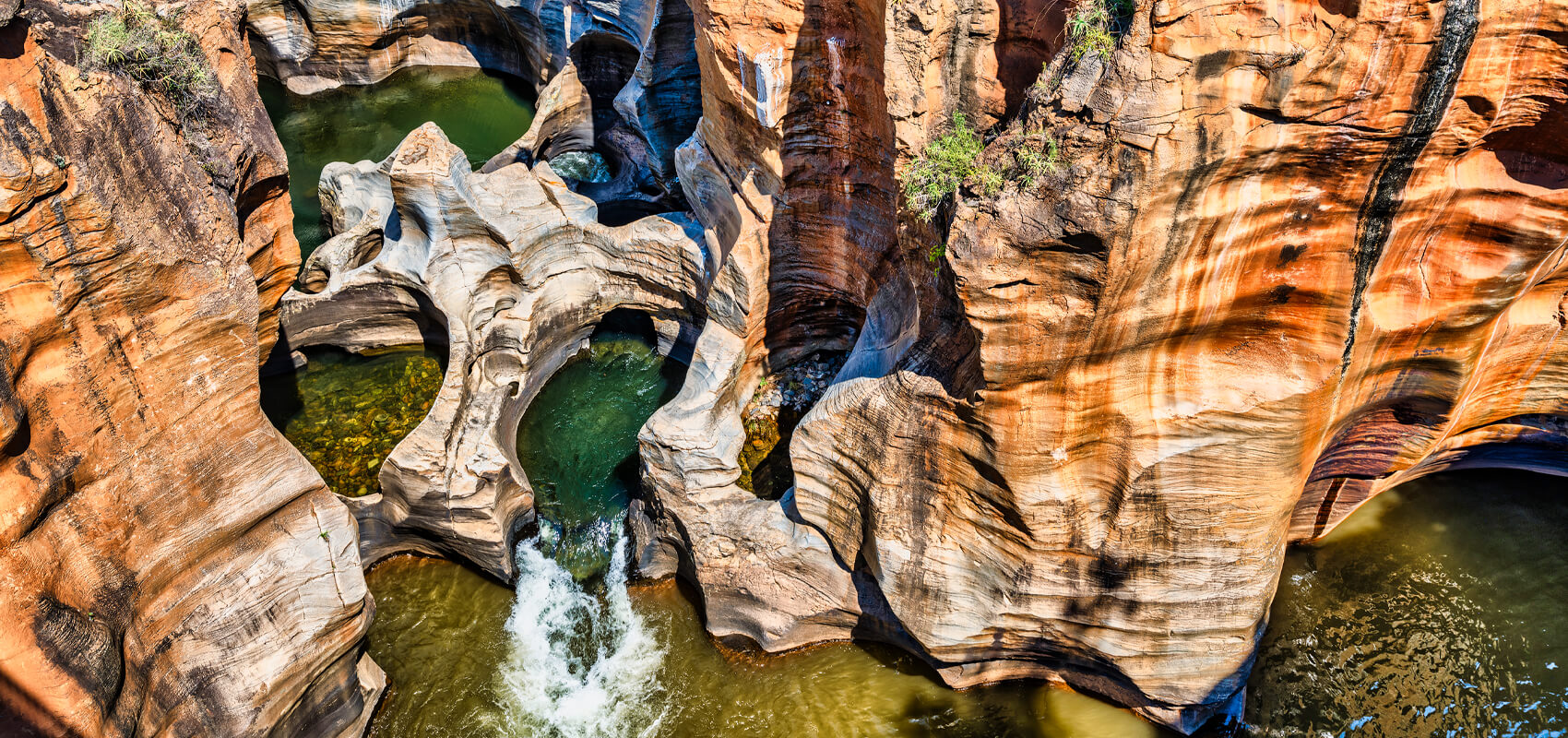 Picturesque view of the renowned Bourke’s Luck Potholes along the Panorama Route.
Picturesque view of the renowned Bourke’s Luck Potholes along the Panorama Route.
Visitors can explore this geological marvel via a network of sturdy metal bridges and walkways suspended above the swirling water and rock formations below. The contrast between the deep, water-carved channels and the colourful layers of red and yellow rock, especially against the rushing river water, creates a memorable and highly photogenic scene. There’s also a visitor centre providing insights into the area’s geology, along with picnic facilities and a craft market. Don’t forget to toss a coin into the waters for good luck!
Tips for visiting Bourke’s Luck Potholes:
- Entrance Fee: A significant entrance fee is charged here, contributing to the upkeep of this major site. Card facilities are usually available, but having cash is a good backup.
- Time: Allow plenty of time (at least 1-2 hours) to walk the bridges, explore the different viewpoints, visit the centre, and soak in the unique landscape.
- Walkways: Stay on the designated bridges and walkways for your safety and to protect the fragile rock formations.
- Photography: This is a photographer’s delight, featuring countless angles and compositions focusing on the water, rock colours, and formations. There’s even a popular photo frame spot.
- Wildlife: Look for colourful lizards sunning themselves on the rocks and perhaps even the blue-eared kingfisher in the vicinity.
- Facilities: A visitor centre, restrooms, picnic spots, and craft stalls are available on site.
10. The Iconic Three Rondavels
Perhaps the most celebrated and photographed vista along the entire Panorama Route is the Three Rondavels Viewpoint. This key stop presents truly staggering perspectives into the northern reaches of the Blyde River Canyon. The highlight, of course, is the sight of three immense, round, grass-covered mountain peaks rising distinctively from the canyon wall. Their shapes strongly resemble the traditional beehive huts, or rondavels, of indigenous peoples, hence the name.
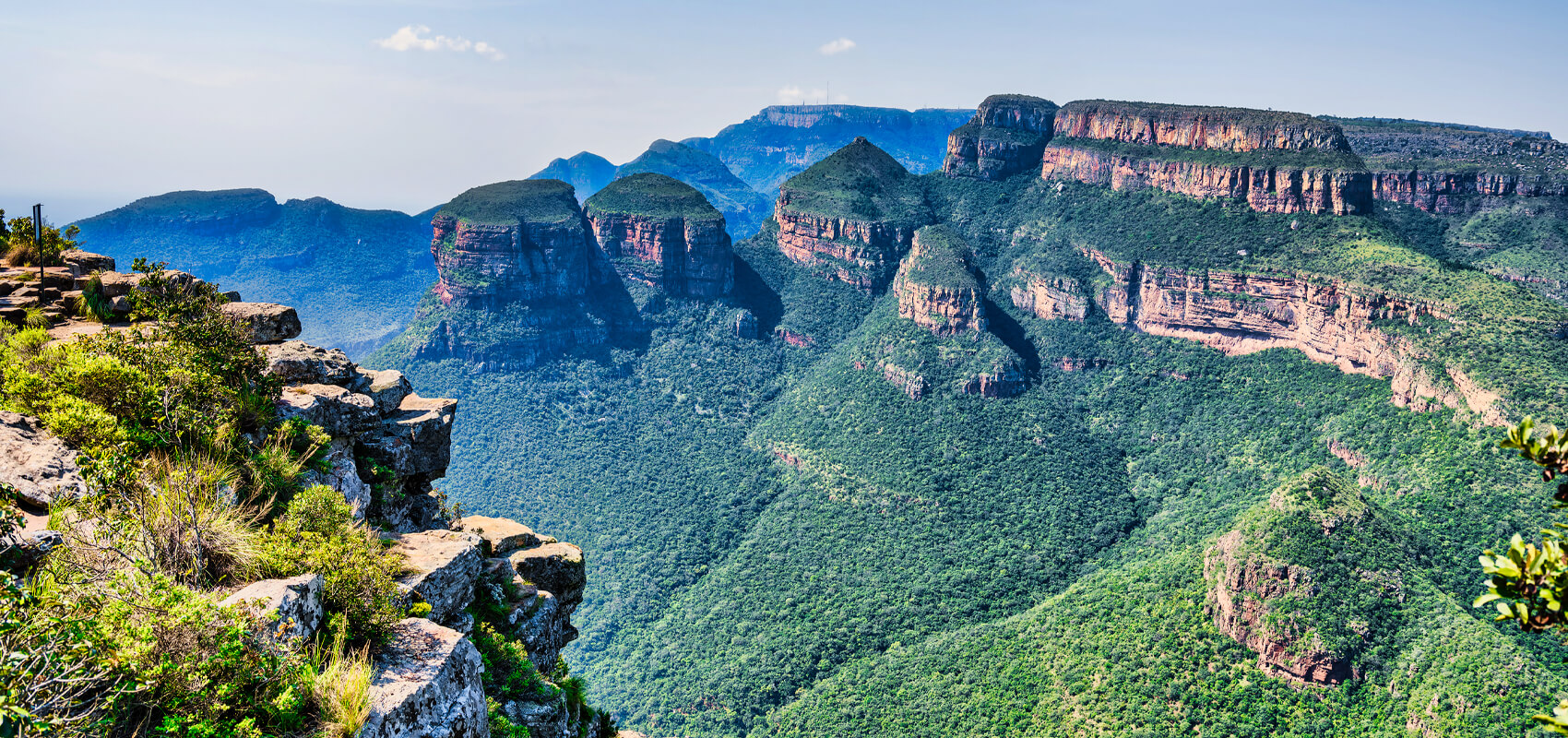 Spectacular panoramic view from the Three Rondavels Viewpoint in Mpumalanga.
Spectacular panoramic view from the Three Rondavels Viewpoint in Mpumalanga.
These geological marvels are composed of resistant dolomite and quartzite, which remained standing while the surrounding softer rock weathered away over millions of years. From the viewpoint, you gaze down into the immense green canyon, following the path of the Blyde River as it snakes towards the Blydepoort Dam shimmering in the distance. It’s a view that wonderfully captures the scale and majesty of Africa’s largest green canyon.
Tips for visiting the Three Rondavels Viewpoint:
- Entrance Fee: An entrance fee is payable for access to this prime viewpoint; have cash handy.
- Photography: This is arguably the signature shot of the Blyde River Canyon. Afternoon light is often recommended for bathing the Rondavels in a warm glow.
- Facilities: You will typically find curio stalls selling local crafts and refreshments, along with restroom facilities.
- Weather: Like all viewpoints, the experience is highly dependent on clear weather. Mist can roll in and completely obscure the view.
- Viewpoint Area: There are multiple vantage points along the fenced edge; take a short walk along the paths to find your preferred angle.
11. Final Destination: The Awe-Inspiring Blyde River Canyon
Having marvelled at the various viewpoints along the way, our final destination is the pinnacle of the Panorama Route – the majestic Blyde River Canyon. Officially encompassed within the Motlatse Canyon Provincial Nature Reserve, this is an incredible natural wonder of global significance. Recognized as the third-largest canyon on Earth and, uniquely, the world’s largest ‘green’ canyon, it stretches for over 26 kilometres and plunges dramatically up to 800 meters deep.
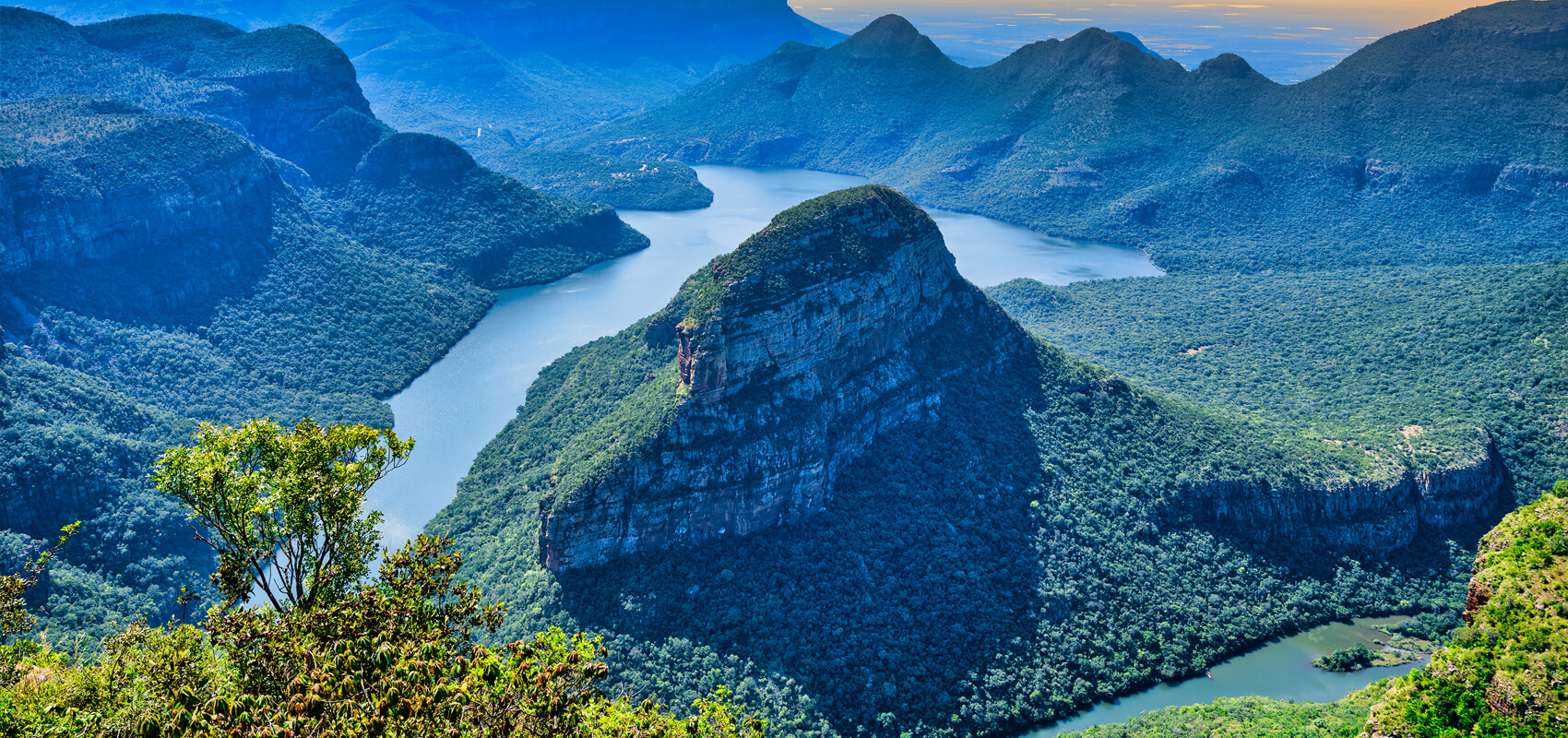 Panorama Route highlight: The steep cliffs and verdant landscapes of Blyde River Canyon.
Panorama Route highlight: The steep cliffs and verdant landscapes of Blyde River Canyon.
Its vast scale is captivating, with steep cliffs covered in verdant subtropical forests framing the winding Blyde River far below. This thriving environment supports an incredible biodiversity, making it a haven for wildlife and birdwatchers. While the viewpoints like Three Rondavels present breathtaking panoramas from above, exploring the canyon from within delivers a completely different perspective. Consider hiking some of the trails that weave through its forests and along the river, taking a unique boat cruise on the Blydepoort Dam, or even embarking on thrilling activities like white-water rafting or a hot air balloon flight over this natural masterpiece.
Tips for Experiencing the Blyde River Canyon:
- Multiple Viewpoints: Remember that God’s Window, Three Rondavels, and Bourke’s Luck Potholes are key spots to appreciate the canyon’s scale and features from above.
- Blyde Dam Boat Trip: For a perspective from water level, looking up at the towering cliffs and the Three Rondavels, consider the boat trip on the Blydepoort Dam. These typically depart from the Swadini area (near the resort) and feature chances to see hippos, crocodiles, and the rare Kadishi Tufa waterfall. Pre-booking is usually essential, and reserve entrance fees apply.
- Hiking Trails: Several trails allow deeper exploration, particularly those starting from the Blyde Canyon Forever Resort (like the Leopard, Guinea-Fowl, and Kadishi-Tufa trails). Check difficulty levels, allow ample time, and be aware of potential access fees if not staying at the resort.
- Adventure Activities: For different views and thrills, look into booking white-water rafting, hot air ballooning, helicopter tours, or microlight flights with local operators.
- Wildlife Viewing: Look for hippos and crocodiles on the dam, diverse birdlife (including raptors), primates, and various antelope species within the reserve.
- Nature Reserve: Respect the environment within the Motlatse Canyon Provincial Nature Reserve. Stick to marked trails and take all litter with you.
Useful Links & Resources
- Mpumalanga Tourism and Parks Agency (MTPA): Official body for provincial parks and tourism
- South African National Parks (SANParks): South African National Parks
- Graskop Gorge Lift Company: Graskop Gorge Lift Company: Big Swing, Zipline
- Blyde Canyon, A Forever Resort: A Forever Resort:Blyde Canyon,
- Blyde Dam Boat Trips (Blyde Canyon Adventure Centre): Blyde Dam Boat Trips
- River Rafting & Water Activities (Hazyview/Sabie): River Rafting & Water Activities
- Hot Air Ballooning (Sun Catchers): Hot Air Ballooning
Emergency Numbers:
- Police: 10111
- Ambulance from landline: 10177
- Ambulance From Mobile Phone: 112
We hope this guide, along with the accompanying video “Panorama Route, Mpumalanga: The Ultimate Road Trip Guide”, has ignited your desire to explore this incredible region, combining celebrated sights with practical advice for your journey. Whether you seek adrenaline-pumping activities, peaceful immersion in nature’s grandeur, unique wildlife encounters, or simply unforgettable scenic drives, the Panorama Route delivers in abundance.
Now it’s your turn to hit the road, discover your own favourite waterfalls and viewpoints, create lasting memories, and experience the magic of South Africa’s breathtaking scenic rooftop. Happy travels!
Our Photography Portfolio:
The photographs featured in this Panorama Route Travel Guide were captured during the filming of our accompanying video. If you want to license these specific images, or explore thousands more from around the world that we’ve created over 14+ years, you can find our portfolios on major stock platforms below:
- Shutterstock: Shutterstock
- Adobe Stock: Adobe Stock
- Getty Images: Getty Images
- Depositphotos: Depositphotos
